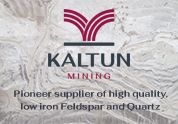
Welcome

The attractive look, low maintenance, affordability, and longevity of ceramic tiles make them popular in Asian countries. However, among the most important factors driving ceramic tile production and use in Asia is its affordability.
As the ceramic tile industry has developed over the past few decades, highly value-added products such as vitrified tiles, double-body tiles, large-size slabs, and thin tiles have become available. As Asian countries gained the latest technology, they began producing European-quality ceramic tiles for significantly lower costs, making them significant bases for ceramic tile production since the first century. As a result of this development, these countries have gradually but surely emerged as the most dominant force in the global ceramic tile industry, led by China and followed by India, Indonesia, Vietnam, Iran, Thailand, and the United Arab Emirates. It is anticipated that Pakistan, Bangladesh, and the Middle East region will join this group of large producers of ceramic tiles in the near future. Yogender Singh Malik examines the market for ceramic tiles in Asia in his article and concludes that Asian countries will continue to dominate the global ceramic tile market over the next few years, accounting for more than 70% of production in 2022.
A growing economy in the Asia-Pacific region, as well as the highest adoption of flat renovation and replacement products in China, Japan, South Korea, ASEAN countries, and India, makes the region the world’s largest and fastest-growing market for roofing tiles. In recent years, the market has experienced rapid growth as a result of population growth and the construction of new homes, commercial buildings, and infrastructure. The reasons for this exponential growth are examined in Jahir Ahmed’s article.
Ceramic manufacturers from around the world are attracted to Africa due to its large population, rising disposable income, and low per capita ceramic consumption. While tile and sanitaryware capacities have increased significantly in recent years, there is still a substantial supply-demand mismatch. Both segments are heavily reliant on imports. For ceramic producers who are ready to make the move, Yogender Singh Malik says the incredible continent of Africa with more than 1,460 million people offers plenty of opportunities.
Zircon sand is used extensively in ceramics due to its high refractive index and ability to provide opacity. Major zircon producers expect zircon demand to grow faster than supply due to macroeconomic trends such as Asia’s population growth, growing affluence and urbanisation. These factors will support demand for ceramic tiles, sanitaryware and tableware, as well as advanced ceramics. As ceramic industries expand and new uses are discovered for zircon, Rohan Gunasekera believes demand will outpace supply in the near future, with mining multinationals ramping up capacity.
Long-term prospects for Pakistan’s ceramic consumption remain bright despite the current lean phase. In addition to the growing trend towards urbanisation, the ambitious China-Pakistan Economic Corridor (CPEC), which is expected to attract more than $60 billion in investments, contributes to this positive picture. It’s only a matter of time before the ceramic industry benefits from the rising population and rapid urbanisation of the nation, observes Yogender Singh Malik in an insightful piece on South Asia’s second largest country.
Umgi Private Equity Fund’s portfolio company VESCO extracts and supplies ceramic raw materials worldwide with a product range available in over 20 countries. Dmitry Kostornichenko, VESCO’s chief commercial officer, speaks exclusively with Asian Ceramics about his company’s future plans in this edition’s exclusive interview.
Inside the current issue
See us at:
Check out a sample issue
Follow the link to download a whole sample issue for yourself and see what AC has to offer Read it nowAdvertise
Intuitive, bespoke, highly effective marketing campaigns
Editorial
Download our editorial features schedule today.
Year Planner
Map out your business year with our free to download calendar


















